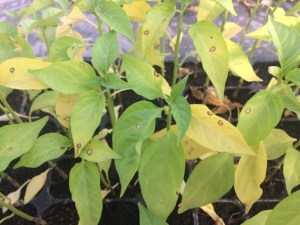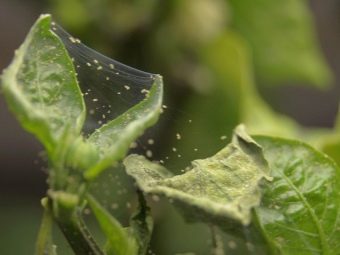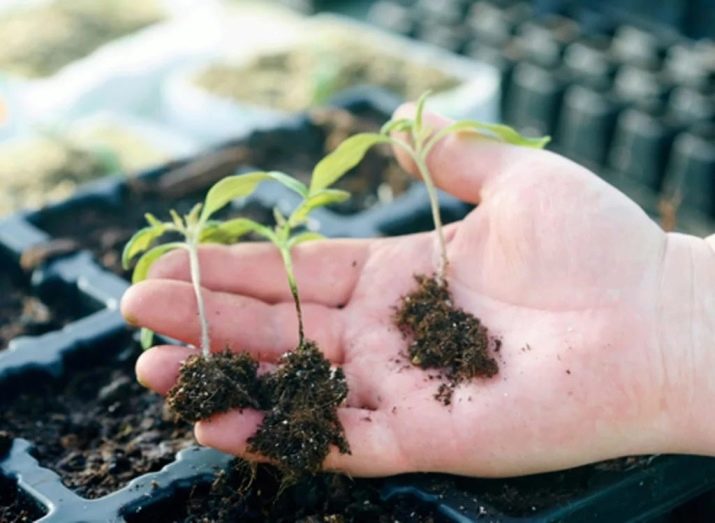Why does pepper shed leaves and what to do?

Pepper is a fairly common crop for cultivation, and many gardeners are happy to accommodate several bushes on their land. So that the pepper does not hurt and pleases with its fruits, it is necessary to pay a lot of attention to it.But when the problem has already arisen, and the bushes turn yellow, and then the leaves fall, it is necessary to understand its root cause. The answer will be found in this article.
The reasons
Pepper there are many reasons to part with its foliage. Perhaps such a reaction does not promise anything terrible, but maybe right now it is necessary to quickly conduct a series of rescue procedures. But first things first.
- Shine. From the moment a sprout emerged from the earth, it is necessary to monitor its condition. And the first thing that can affect well-being is the degree of light. The lack of such a factor, be it sunlight or artificial, will provoke the pulling of seedlings. If this will last too long, the sprout may, weakening, begin to lose foliage.
- The soil. The cause of the problem can lurk in acidic and heavy soil. Pepper does not like to grow in such conditions. And oddly enough, his subsequent reaction will manifest in yellowing followed by dropping the leaves.
- Disease. Initially, the land contaminated with bacteria or fungi is likely to be unacceptable for the life of weak seedlings. And you also need to be prepared for the fact that pests can emigrate from another place and cause harm to the plant.
- Space. No need to save by allocating small containers for seedlings. In cramped conditions, the plants will begin to entangle and rot the roots. This will significantly reduce the supply of nutrients, which will entail a number of other problems, including dropping foliage. If it is possible to plant the pepper on time, then, of course, you can use small peat pots. But if before planting at least another month, the container for growing should be roomy, about 0.5 liters per plant.
- Lack of moisture. In dry weather, especially before transplanting into open ground, it is very easy to miss the drying up of the earth in a pot.
- Excess moisture. Overflow can also provoke a loss of foliage in the pepper.
- Temperature. Far beyond temperature conditions (less than + 12 ° C at night and above + 26 ° C during the day) is another common cause of the problem.
- Transfer. This is the case when, to cope with leaf fall, you just need to wait. Disembarking pepper at a new place is almost always accompanied by stress, which can manifest itself in the form of yellowing leaves with their further falling off.
This situation does not pose a potential threat to plant life. Of course, on the condition that the pepper did not start dropping the foliage even before transplanting.
- Minerals Poor mineral soil can not meet the great nutritional needs of pepper. First of all, nitrogen deficiency will manifest itself. Starting from the lower leaves and above, their green color will gradually change to yellow. And with a prolonged shortage of mineral, everything will not be limited to one yellowing, and the plant will begin to lose foliage. In addition to nitrogen, one can not do without such important substances as phosphorus, potassium, calcium, iron and others. How to prevent the mineral starvation of the pepper, will be discussed below.
- Sunburn. The problem is more relevant for regions with a very active summer sun. In the days when the sun's rays carry a critical amount of energy, the bare bush, especially the young seedlings, can get sunburn. But, on the other hand, pepper is a light-loving plant. Therefore, in such conditions, you need to properly plan a place to grow, tacking between the sizzling sun and deaf shadow.
- Water temperature. Anything that can lead to the shock of the plant, one way or another, will affect the health of the foliage. Watering with cold water increases the risk of damaging the root system, which then will not develop properly. This will inevitably cause complex damage to the pepper.
- Pests. Some small insects will also want to try a tasty bell pepper, just not its fruit, but the leafy part. Plant juices will act as a main dish for pests.The leaves of such an impact will not be able to stay long with the plant and soon leave it.
Treatment
As it became clear, there are quite a few factors that can lead to dropping foliage. Based on the list above, some problems can be easily prevented, but others require detailed consideration. For a start, it is worth highlighting those measures that will be directed not at short-term treatment, but at preventing disease.
Prevention
As was said, heavy and sour soil is by no means the best substrate for growing peppers. For a culture to develop without complications, you need to prepare everything. Introduction of rotted manure or humus from the fall will help improve the structure of the earth, making it more loose. And the problem of acidification is perfectly solved by the addition of wood ash or chalk.
Besides, Improving the quality of the soil in this way will prevent the formation of another common problem: a shortage of minerals. Manure or humus in this case will act as a very capacious source of nitrogen. And wood ash will simply not leave a chance for the development of phosphorus deficiency. And with other important minerals, there will be no problems with such a complex introduction of these elements.
Another preventative measure is disinfection of the substrate, where it is planned to grow sweet peppers. The fact is that many pests can easily winterize in the ground. Even if at the time of the autumn harvest there were no signs of the appearance of parasites, this does not give any guarantee that the insects or fungi did not have time to settle in the new territory. Therefore, prevention never hurts.
If the amount of land is small, for example, the amount that seedlings need, then you can use the thermal method. Freezing the soil for several days or burning it in the oven with a high degree of probability will not allow the seedlings to get sick.
When it comes to disinfecting large amounts of land, which is especially important for greenhouses, calcining is not the best method here. In this case, the microbiological preparations “Gamair”, “Fitosporin” and others are well suited. At present, a large selection of such tools aimed at combating both insects and fungi is already presented. At the same time, without loss of the quality of the substrate itself, even in the long-term use. It is still possible to specifically combine plants and environmental elements to create a bio-shield from various ailments, but this is a separate issue.
Operational measures
Diseases and pests that can lead to the fall of leaves on pepper do not always overwinter in the ground next to the plant. They may appear suddenly. We will understand what to do in this case. First you need to deal with the type of attackers, insects or fungus.
Spider mite
Small white dots on the foliage will indicate the appearance of a spider mite. These insects are unlikely to destroy the plant, but the harvest will definitely reduce. To control pests in the early stages, you can try to collect them manually or with a wet sponge, but this is a very laborious undertaking if you do not have a couple of diseased plants at your disposal. A more effective method would be the use of biological agents, such as Biovir, Nissoran, Fitoverm, and others.
Aphid
A more dangerous pest than a tick is a plant louse. You can find it with the naked eye on the back of the sheet. A colony of these insects in a state not only to reduce the future harvest, but also to kill the plant, sucking all the juices. Will help in the fight the same drugs that are suitable for the removal of spider mites. And also aphids do not like ashes. Therefore, spraying in the morning with a solution of wood ash with water will be a good solution.
Fusarium
A very dangerous and widespread fungal disease Fusarium causes yellowing and falling foliage. Unfortunately, it is not always possible to say for sure that pepper is affected by this very disease.That's because Fusarium at first looks like a nitrogen deficiency.
But then he gets more distinctive features (twisting the leaves into a tube, withering the upper shoots), noticing that you need to take action immediately. The best solution is burning the diseased plants.
Yes, no matter how regrettable it is, the fight against Fusarium in its active stage is ineffective. It’s better to save what you have than to lose everything. The remaining plants are processed "Hamair", "Previkur" or "Fitosporin."
Blackleg
Another dangerous fungal disease is blackleg. Based on the name, the main symptom of infection is already clear. The stem at the base of the plant darkens and becomes thinner, and the same changes occur to the foliage, it turns yellow and falls off. Having found the fungus in advance, you can try to transplant the infected to a separate place. And there already begin to treat the same drugs that are used for fusarium. But it is necessary to say at once that there are not so many chances for successful recovery from plants, therefore, having found a black leg, most often they are immediately burned.
Care rules
A series of simple measures for the care of plants will help save those forces who would otherwise have gone on the search and elimination of various ailments.
- Do not pour cold water. It is better to leave a container with water for watering the house, then the temperature will be optimal.
- To produce watering only after drying of the top layer of the soil, so as not to create once again favorable conditions for the development of mold.
- Check the soil moisture more often, especially for seedlings growing in containers. At least the simplest method is suitable for analysis: if a finger, which is recessed into the soil on one phalanx, does not come across a wet layer, it is time to water it.
- Regularly inspect plants for infection with fungal diseases or insect infestations.
- Harden the seedlings before transplantation into the open ground, so as not to subject the plant to stress, increasing the risk of infection with the same dangerous diseases.
- Correctly choose the model of the greenhouse, so as not to violate the temperature regime. In the southern regions this is an actual problem due to overheating during the daytime.
Learn more about why pepper drops leaves, you can in the next video.


































